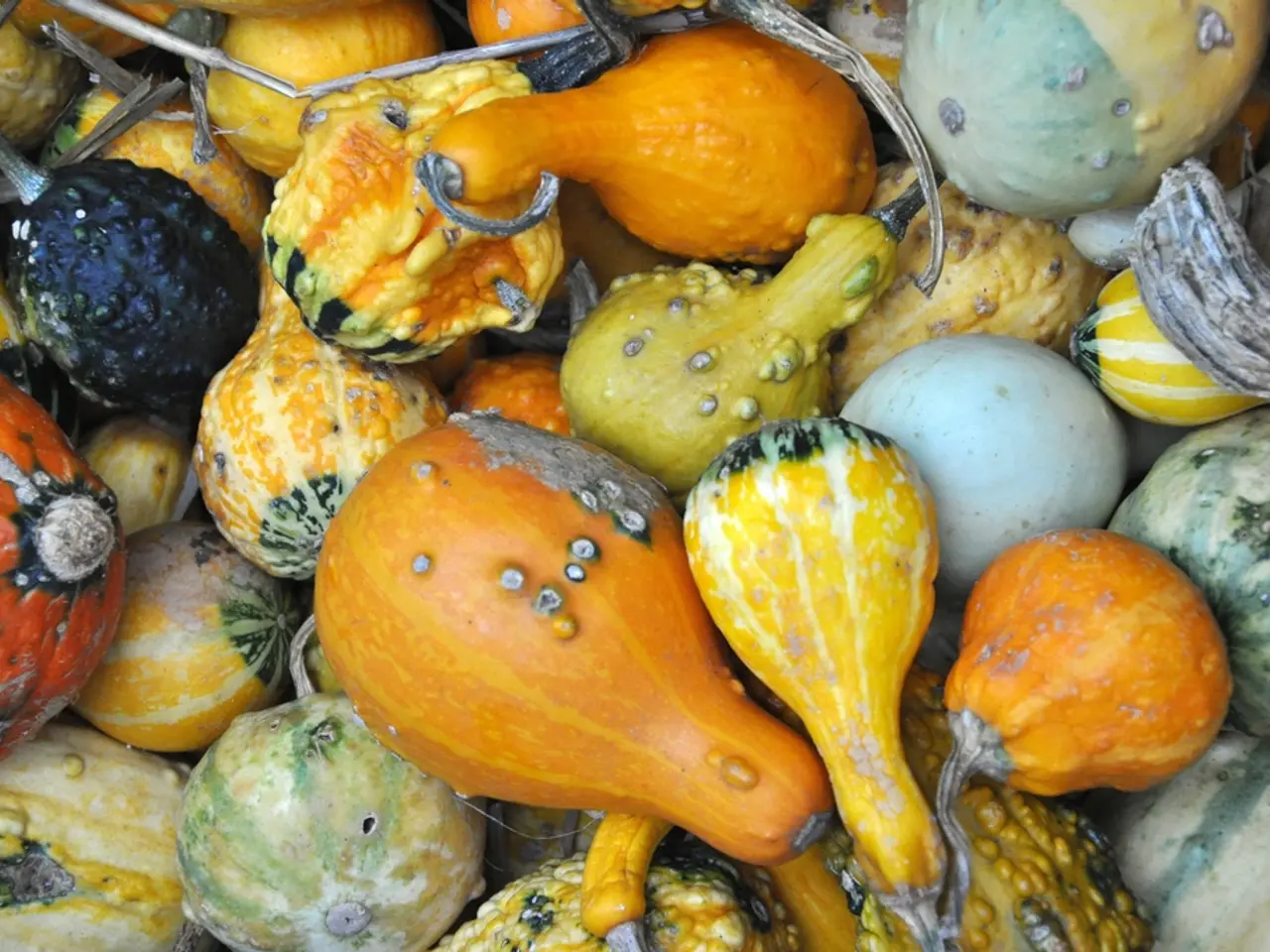Guide to Cultivating Kiwifruit in Your Own Backyard
Learn how to cultivate popular kiwi fruit varieties such as 'Jenny', 'Issai', 'Hayward', and 'Atlas' in the UK by understanding their characteristics, site requirements, care needs, and fruit set and harvest methods.
Variety Characteristics
- 'Jenny': A hardy female variety producing delicious fruit, suitable for UK conditions. Although it requires a male pollinator, it stands out as an easy-to-grow option due to its hardiness and taste.
- 'Issai': A self-fertile hardy kiwi that is well-suited for smaller spaces and pots, and it fruits earlier than other varieties.
- 'Hayward': The classic large fuzzy kiwi, commonly grown commercially. It requires a male for pollination and may be less hardy than hardy kiwis, so site choice is important.
- 'Atlas': A hardy kiwi with larger fruit than some, it needs a male pollinator but is well-suited for UK and cooler climates.
Site and Planting
- Plant kiwi vines in full sun with well-drained but moisture-retentive soil.
- Provide a strong trellis, fence, or arbor for the vigorous vines to climb, as kiwi vines can grow quickly.
- When applicable, plant male and female vines in a ratio of about 1:6 (for example, 'Jenny', 'Hayward', 'Atlas' need a male pollenizer).
- Avoid frost pockets as flowers and new shoots can be damaged by late frosts.
- Kiwi plants prefer slightly acidic to neutral soil pH.
Care
- Water regularly, especially in dry spells, but avoid waterlogged soil.
- Prune annually in winter when dormant to maintain shape and encourage fruiting wood (usually new growth on 1-year-old wood).
- Mulch to retain moisture and suppress weeds.
- Fertilize with a balanced feed in spring, avoiding excess nitrogen which promotes leaf growth over fruit.
- Protect young plants from harsh winter conditions; hardy kiwi varieties do better in the UK than classic fuzzy kiwis.
Fruit Set and Harvest
- Flowers appear in late spring; hand pollinate if natural pollinators are scarce.
- Fruit typically matures in autumn (September to October).
- Hardy kiwis like 'Issai' produce smooth, smaller kiwis that can be eaten skin and all.
- Fuzzy kiwis like 'Hayward' require picking before the first frost and ripening off the vine.
Harvest and Storage
- Harvest kiwis in August and September and leave them to ripen off the vine for a few weeks before eating them.
- Unripe kiwi fruits can be stored in a cool place or in the fridge for up to three months. To ripen kiwis, leave them at room temperature.
Sources mention hardy kiwi varieties growing well in the UK climate and needing proper support structures and pollination strategies. 'Issai' stands out as self-fertile and faster fruiting, making it ideal for smaller garden spaces or pots. Classic kiwis like 'Hayward' need more frost protection and male plants for fruit set. General growing tips include providing suitable sun, support, pruning, watering, and fertilizing.
[1] RHS (2021). Actinidia arguta [2] HTA (2021). Actinidia arguta [3] BBC Gardeners' World (2021). Growing kiwis [4] Thompson & Morgan (2021). Actinidia arguta [5] Gardening Know How (2021). How to Grow Hardy Kiwis
- To create a delightful home-and-garden setting, consider planting hardy kiwi varieties like 'Issai' for their self-fertile nature and compact size, suitable for smaller home gardens or pots.
- Adopting a kiwi-based lifestyle could entail learning about the site requirements, care needs, and fruit set methods of popular kiwi fruit varieties, such as 'Jenny', 'Issai', 'Hayward', and 'Atlas', for a bountiful and enjoyable home-and-gardening experience.





